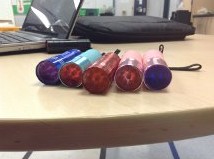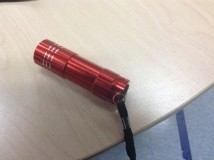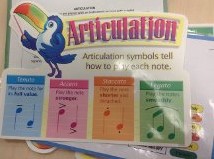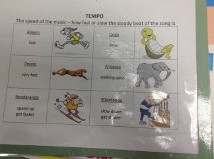The second part of the arts curriculum, which is all about reflecting, responding and analyzing the arts, can be a bit of a bore. Some of the resources available are structured so that a teacher plays a CD and the students listen to a piece of music and complete a chart in response. This type of activity is a good way to evaluate students’ initial reaction and description of the elements of the music. It is also are a great way of informing the teacher about the prior knowledge that the students already have. However, I have not found these types of activities to be successful in capturing a deep level of analysis and interpretation. I have also never heard a student cry out in glee about the prospect of completing one of these activities.
To really get students to analyze music and critically reflect about what they are hearing, students need to engage with the piece of music more than one time. But how do you keep their attention and focus over multiple listening experiences? The answer is do activities that are fun and have built in time for changing thoughts and opinions.
Activity One
Ceiling Flashlight show.
This first Unit stemmed from an idea that was presented in a workshop by the OMEA president Gena Norbury.
The students create light shows on the ceiling of the classroom to go along with a classical piece of music. You can buy small hand held flashlights for fairly cheap and take some Sharpies and colour the lens with a variety of colours. Next, turn off your lights, lie down and watch the ceiling light up! I usually create one example with the class where we identify all the elements of music that we hear, the form of the music and our initial reaction. We then choose the colour, formation and shape we want our light show to take so it matches the music. We test it out and come back and change it until we are happy with the end result.
Next, the students are responsible for identifying the form, elements, and initial reaction to their own piece of music and for creating their own light show to perform for the rest of the class. I would rate this as my favorite unit for a grade 4 or 5 class to develop their listening skills. Each group listened to their piece dozens of times through their preparation. This really allowed them to develop opinions, thoughts and feelings about the piece of music.
Each group should have access to their own music player for their piece (yes, this is noisy) and I block out my windows in my class during this unit. When the students designed their own light shows in the past they used Bizet- Toreador Song , Beethoven- 5th symphony ,Prokofiev- Romeo and Juliet (Montagues and Capulets), Vivaldi- Four seasons- fall. You can really use any music that has an easy form to follow and fairly straightforward elements to identify.
Activity Two
Create a story that demonstrates the music.
I start this lesson with a jigsaw activity where each group becomes an expert on one music term. Each group receives one of the posters from the music room and reviews it and quizzes the other members in the group. Afterwards, I reorganize the groups so that there is an expert on each vocabulary term in the each new group. Their first job is to listen to the music and share their initial reaction to the music using some of the vocabulary they have just learned. If groups are having trouble, I approach them and ask some simple guiding questions such as “What is the feeling of the music? What does the music bring to your mind?” We share some of our thoughts in a whole group discussion and then each group decides on a story that the music could be telling. The group then begins to act out the story with mime to try and capture the feelings and themes of the music. Students share their creations with the class and I have students give feedback. Each group goes back and revises their initial creation. My favourite piece of music to use for this activity is anything John Williams but especially “Close Encounters of the Third Kind”. That long crescendo to the very loud accented note make the kids laugh every single time.
Activity Three
Draw it and pass it on.
Have students listen to piece of music and have them draw whatever the music makes them think of. At a certain point have everyone in the room switch papers with someone else as the music continues. The next person continues the pictures by adding their own ideas. Make one more switch and have the final person add colour to the piece of art. When students are able to do this task successfully use a piece of music that clearly changes feeling in the middle. This allows the pictures to evolve as they are passed around.
My students tell me that these are some of their favourite activities all year.






Thanks for this Tammy, I can’t wait to use these activities! My grade 5 class especially will love the shared drawings.